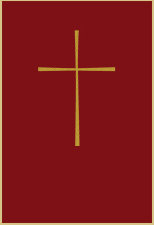

The rubric instructed the minister to preside from the north side of the table (the two ends of the table pointed east-west). Unlike in the first Prayer Book, the 1552 prescribed kneeling around the table. The 1552 rubrics prescribed that the table be placed either in the middle of the chancel or nave (the “north side” requirement implies a lengthwise orientation, with the two ends of the table pointing east-west, though the other orientation was not unknown).Īfter the Prayer for the Church Militant (removed from its old position in the Canon of the Mass to a new position in Ante-Communion), before the Confession of Sin, laity who intended to communicate gathered around the table, kneeling, while non-communicants exited. In 1550 the Privy Council ordered the removal of stone altars, which were to be replaced with wooden tables. In the second Edwardine Prayer Book (1552), the rubrics called for something that looked more like that first reformed Communion in Zurich. The new English text of the prayer of consecration aligned with the implicit meaning of the change in the relative positions of the assembly and table, emphasizing reception of the sacrament as the climax of the ritual. 1549 visitation articles ordered that “no minister do counterfeit the popish mass” - after listing a number of the ceremonies that accompanied the old service, it encapsulates the order by proscribing any other “ceremonies than are appointed in the King’s Book of Common Prayers.” Communion in both kinds was now required. Elevation of the consecrated elements was explicitly prohibited and the prescribed ceremonial was dramatically reduced. The first Prayer Book did not prescribe kneeling to receive communion, but permitted kneeling, standing, and sitting. Rather than watching from a distance through the screen, the assembly gathered in the chancel near the table and presider (there was no rail to seperate them), a radical shift in the position of the laity relative to the table.

In the Communion liturgy, the assembly were instructed to enter the chancel during the offertory to deposit their alms those who intended to receive communion were to remain there kneeling near the table for the Communion proper, while those not intended or not prepared to communicate exited the service. The 1549 Book uses altar and table interchangeably in the rubrics, but only uses the table in text read aloud to the assembly. The first edition of the Book of Common Prayer (1549) retained stone altars and the ad orientem position, while moving decisively in a reformed direction in other ways.

In the Church of England, Archbishop Cranmer implemented a policy of gradual liturgical reform. Sitting around the Communion table became the most common practice in the Reformed tradition. Later some Reformed divines, like John Knox, vigorously opposed kneeling on the grounds that the New Testament did not prescribe it and that it encouraged adoration of the consecrated elements. When the time came to receive the sacrament, the assembly all knelt down at the tables communicants tore off a piece from loaves that were brought around to them on a large wooden platter, after which wooden cups were passed around. For the first reformed Communion service in Zurich, in 1525, the people sat at long tables placed lengthwise in the nave of the old Minster. By contrast, Zwingli, the earliest leader of what became the Reformed tradition within Protestantism, immediately implemented such reforms in Zurich. I previously observed that, although Luther preferred ceremonial reforms that reflect the dominical institution of the sacrament in the context of a meal and avoid sacerdotal associations, he was reluctant to impose such reforms. Considering its general obscurity, I will explore the origins of this arrangement in a bit more depth than in the previous two sections, considering its advantages and disadvantages. Though it was the universal Anglican practice from the Restoration until the mid-nineteenth century, north side presidency is little known among Anglicans today. The 1662 Prayer Book prescribes that the priest preside from the north side of the table. Presiding from the North Side of the Table


 0 kommentar(er)
0 kommentar(er)
